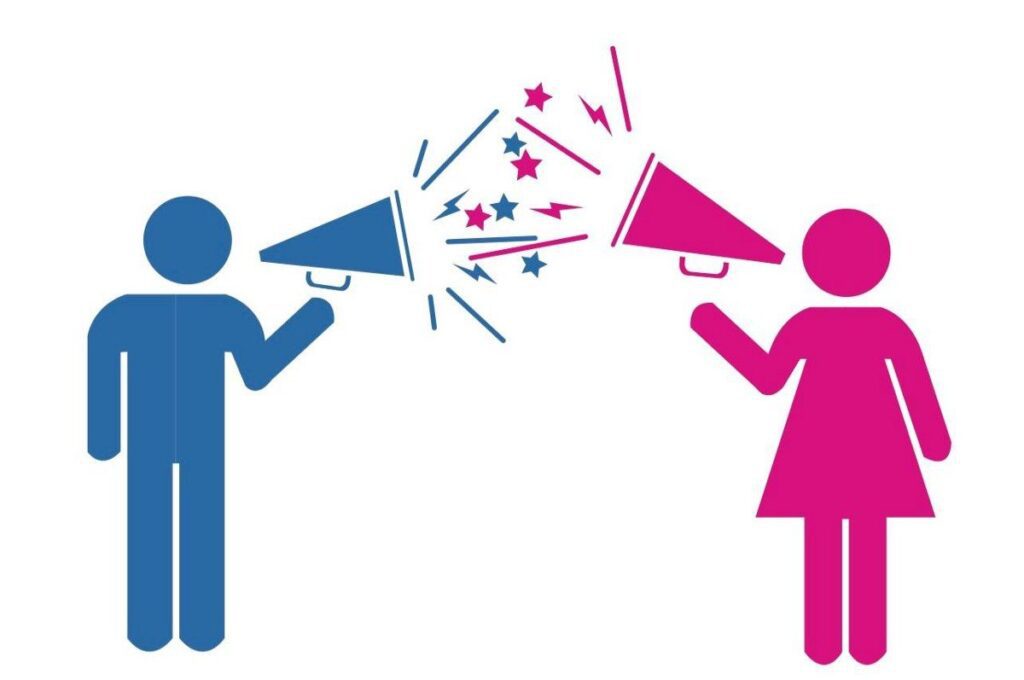Part 1: The Foundation of Healthy Relationships

Effective communication is the cornerstone of any healthy and thriving relationship. Whether it’s a romantic partnership, a friendship, or a family bond, the way we communicate profoundly impacts the dynamics and overall well-being of the relationship. Communication in relationships goes beyond the mere exchange of words; it involves active listening, empathy, and understanding. In this article, we will explore the crucial role of communication in fostering and maintaining healthy relationships.
1. Open and Honest Expression
At the heart of healthy communication is open and honest expression. Being able to share thoughts, feelings, and concerns openly with one another creates an environment of trust and vulnerability. When individuals in a relationship feel comfortable expressing themselves without fear of judgment or reprisal, it fosters a deeper emotional connection and strengthens the bond between them.
2. Active Listening
Communication is a two-way street, and active listening is an essential component. Truly listening to what the other person is saying, without interrupting or formulating responses in your mind, shows respect and validates their feelings. When both parties practice active listening, they are better able to understand each other’s perspectives and needs, leading to more meaningful and constructive conversations.
3. Empathy and Understanding
Empathy is the ability to put oneself in the other person’s shoes, to understand and share their feelings. Cultivating empathy in communication helps build compassion and fosters a sense of emotional connection. When we truly understand and acknowledge each other’s emotions, it leads to more supportive and caring relationships.
4. Resolving Conflict Constructively
Conflict is a natural part of any relationship, but how it is handled can make all the difference. Effective communication enables couples and individuals to address conflicts constructively. Instead of resorting to blame or defensiveness, healthy communication involves finding solutions together, considering each other’s needs, and compromising when necessary.
In Part 2 of this article, we will delve deeper into the different communication styles and their impact on relationships. Understanding how communication can either nurture or hinder a relationship is essential for building strong and lasting connections.
Part 2: Communication Styles and Their Impact on Relationships

In the realm of communication in relationships, the way we choose to express ourselves can significantly shape the dynamics and outcomes. Different communication styles can either nurture or hinder a relationship. Let’s explore some common communication styles and their impact on fostering healthy connections.
1. Assertive Communication
Assertive communication is a balanced and effective style that involves expressing thoughts, feelings and needs in a clear and respectful manner. When individuals use assertive communication, they advocate for their rights while considering the rights of others. This style promotes open dialogue, builds mutual respect, and fosters trust within the relationship.
2. Passive Communication
Passive communication involves avoiding conflict and expressing one’s needs and desires indirectly or not at all. People who use passive communication may have difficulty asserting themselves, which can lead to unmet needs and resentment. In a relationship, consistent use of passive communication may create misunderstandings and barriers to resolving issues.
3. Aggressive Communication
Aggressive communication is marked by expressing one’s needs and feelings in a forceful and confrontational manner. This style often involves blaming, attacking, and disregarding the other person’s feelings. Aggressive communication can be damaging to relationships, as it erodes trust and creates emotional distance between individuals.
4. Passive-Aggressive Communication
The passive-aggressive communication style combines elements of both passive and aggressive communication. Individuals using this style may appear outwardly passive but engage in subtle acts of hostility or resistance. Passive-aggressive behavior can lead to confusion, unresolved conflicts, and a lack of open communication in the relationship.
5. Active and Reflective Listening
In addition to communication styles, listening plays a pivotal role in healthy relationships. Active listening involves giving full attention to what the other person is saying and demonstrating understanding and empathy. Reflective listening goes a step further by paraphrasing and restating the speaker’s words to confirm understanding and validate their feelings.
6. Non-Verbal Communication
Non-verbal cues, such as body language and facial expressions, are equally important in communication. Being attentive to non-verbal signals helps in understanding the emotions behind the words spoken. Making eye contact, nodding, and using open body language can signal genuine interest and engagement in the conversation.
Understanding and recognizing the different communication styles can help individuals and couples work towards developing more constructive and harmonious ways of relating to one another. In Part 3 of this article, we will explore practical tips for improving communication in relationships and strengthening emotional connections. Effective communication is a skill that can be learned and honed, leading to more fulfilling and satisfying relationships.
Part 3: Practical Tips for Improving Communication in Relationships

Effective communication is a skill that can be cultivated and nurtured to enhance the quality of relationships. Here are some practical tips to improve communication in relationships and foster stronger emotional connections:
1. Practice Active Listening
Make a conscious effort to practice active listening during conversations. Put away distractions, such as phones or electronic devices, and focus entirely on the speaker. Show genuine interest by maintaining eye contact and nodding to acknowledge what they are saying. Avoid interrupting and allow the person to express their thoughts and feelings fully.
2. Use “I” Statements
When expressing your needs, feelings, or concerns, use “I” statements rather than “you” statements. For example, say “I feel upset when…” instead of “You always make me upset.” “I” statements take ownership of your emotions and reduce defensiveness in the other person.
3. Be Mindful of Non-Verbal Cues
Pay attention to your non-verbal cues as well as those of the other person. Non-verbal communication can convey emotions and intentions, sometimes more effectively than words. Be aware of your body language, facial expressions, and tone of voice, ensuring that they align with the message you want to convey.
4. Avoid Making Assumptions
Assumptions can lead to misunderstandings and miscommunication. Instead of assuming what the other person is thinking or feeling, ask clarifying questions to gain a better understanding of their perspective. Seek to understand before seeking to be understood.
5. Take Time-Outs During Heated Discussions
In times of conflict or heated discussions, it’s okay to take a time-out if emotions are running high. Agree with your partner or the other person to take a short break and cool off before revisiting the conversation. This allows both parties to regain composure and approach the discussion with a calmer and more rational mindset.
6. Practice Empathy
Empathy is the ability to understand and share the feelings of another person. Put yourself in the other person’s shoes and try to see things from their perspective. Validate their emotions and demonstrate that you genuinely care about their well-being.
7. Be Open to Constructive Feedback
Be open to receiving constructive feedback from your partner or others in the relationship. It takes courage to share feedback, and listening with an open mind shows that you value their input. Use feedback as an opportunity for growth and improvement within the relationship.
8. Set Aside Quality Time
Make an effort to set aside quality time for meaningful conversations and activities together. Create opportunities to connect on a deeper level, free from distractions and interruptions.
9. Seek Professional Help if Needed
If communication challenges persist, consider seeking professional help from a therapist or counselor. Professional guidance can provide valuable insights and tools for improving communication and resolving underlying issues.
In Part 4 of this article, we will discuss the transformative power of effective communication in relationships and how it can lead to greater intimacy and emotional intimacy. By nurturing healthy communication patterns, individuals can strengthen their bonds and create more fulfilling relationships.
Part 4: The Transformative Power of Effective Communication in Relationships

Effective communication is the lifeblood of healthy and thriving relationships. When individuals cultivate open, honest, and empathetic communication, they create an environment of emotional intimacy and trust. Let’s explore the transformative power of effective communication in relationships and how it contributes to greater intimacy and emotional connection.
1. Strengthening Emotional Intimacy
Emotional intimacy is the deep bond that allows individuals to share their innermost thoughts, feelings, and vulnerabilities with each other. Effective communication nurtures emotional intimacy by providing a safe space for open expression and active listening. When partners or individuals in a relationship feel seen, heard, and understood, they are more likely to develop a strong emotional connection.
2. Building Trust and Security
Trust is the foundation of any successful relationship. Honest and transparent communication builds trust and a sense of security between individuals. When partners can rely on each other to express their feelings without judgment or reprisal, they feel emotionally safe and supported.
3. Resolving Conflicts and Misunderstandings
Effective communication is essential for resolving conflicts and misunderstandings that inevitably arise in any relationship. When individuals communicate assertively, actively listen to each other’s concerns, and avoid blame or defensiveness, they can navigate conflicts more constructively. This leads to healthier conflict resolution and prevents the escalation of disagreements.
4. Enhancing Emotional Intelligence
Emotional intelligence is the ability to recognize, understand, and manage emotions, both in oneself and others. Effective communication in relationships enhances emotional intelligence by encouraging individuals to be more attuned to their own emotions and those of their partners. This heightened emotional awareness fosters empathy and compassion, leading to more supportive and empathetic interactions.
5. Cultivating Mutual Respect
Healthy communication promotes mutual respect between individuals in a relationship. When partners actively listen and validate each other’s feelings, they demonstrate respect for one another’s perspectives and experiences. This mutual respect fosters a positive and nurturing environment, where both individuals can flourish.
6. Strengthening Relationship Bonds
Through effective communication, individuals can continuously strengthen their relationship bonds. Regular and meaningful conversations allow couples and individuals to grow together, share dreams and aspirations, and support each other through life’s ups and downs.
7. Sharing Life’s Joys and Challenges
Effective communication enables partners to share life’s joys and challenges with each other. Celebrating successes together and offering comfort during difficult times creates a deep sense of connection and solidarity.
8. Encouraging Personal Growth
Healthy communication encourages personal growth and self-awareness. It allows individuals to express their needs and aspirations, leading to mutual support in pursuing personal goals.
Conclusion
Communication in relationships is more than just the exchange of words; it is the vehicle through which emotional intimacy, trust, and understanding are nurtured. By embracing open, honest, and empathetic communication, individuals can transform their relationships, fostering deeper emotional connections and a profound sense of togetherness. Effective communication empowers couples and individuals to navigate challenges, celebrate joys, and build a future together based on mutual respect and support. Remember, healthy communication is an ongoing practice that requires patience, vulnerability, and a commitment to understanding one another’s hearts.

Amelya Evelyn is freelance writer, health reporter, and author, she shares her experiences in the hope that others will feel less alone in their health struggles.She loves breaking down complex science and health information, making it easier for people to understand